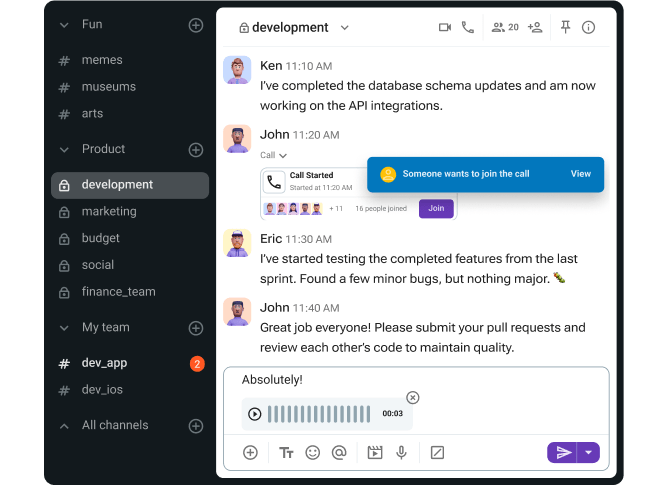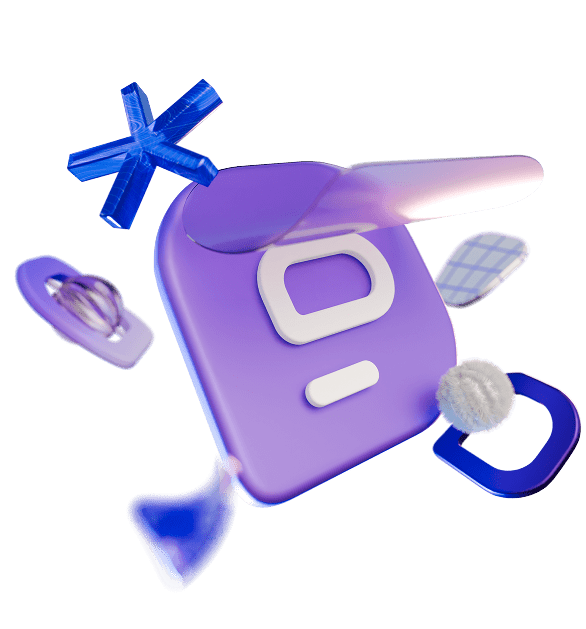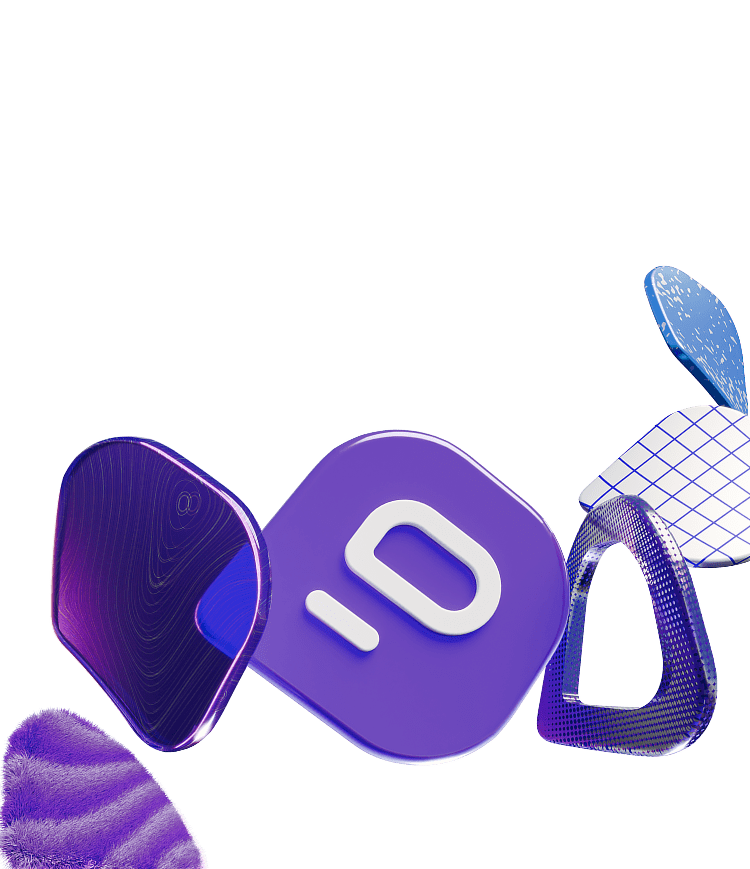The days of formal letters and fax machines are long gone. Even phone calls are becoming increasingly rare in business settings. The era of Internet communication has brought with it a reliance on digital collaboration tools to make workplaces function smoothly.
Collaboration technology is now also indispensable for team collaboration in many different types of organizations. As a matter of fact, these technologies today are the cornerstone of information sharing, daily communication, project and task management — all of which are foundational components of effective team collaboration.
This guide will detail some of the functions and benefits of using collaboration technology. In addition, we will take a look at the most prominent collaboration-enabling features, some specific types of collaboration tools, as well as ways of measuring their success. Finally, we plan on observing some of the emerging collaboration technologies and what we can expect from them in the future, in addition to the current trends in collaboration technology use.

What are collaboration technologies and what do they do?
Collaboration technologies are tools and systems we use to enable and facilitate group work. This is a very broad definition that, technically, includes tools such as Morse code and fax machines. So, we have to emphasize that this guide will narrow down its focus onto modern and up-and-coming digital collaboration technologies.
The collaboration technologies used today function by providing space and resources to help improve team productivity.
They do this by:
- Assisting the process of organizing knowledge and goals;
- Tracking progress;
- Providing channels of communication among employees.
What kind of value does collaboration technology have for businesses?
What can you gain from implementing collaboration technology in your organization? Well, many things. According to research from Queen’s University in Ontario, some of the proven benefits of collaboration technology include:
- Increased creativity and innovation in organizations;
- Potential for cost savings;
- Increased effectiveness of group work;
- Significantly expanded number of potential partners and expertise available to a company;
- Improved information accessibility and transparency;
- Improved work and leadership environment;
- Facilitated fluid workforces and speedy decision-making.
These benefits combined make a compelling case for the use of collaboration technology in your workplace.
🎓 If you want to take a closer look at the topic of why team collaboration is so valuable, check out our in-depth guide to the Benefits of team collaboration.
Collaborer sans problème avec Pumble
6 conceptual elements that make up the digital collaboration cycle
The cycle of digital collaboration is made up of six elements, all of which can have a significant impact on the flow, the nature, and the results of one collaborative instance. According to research, these elements include the following:
- The collaborative task itself;
- The technology used;
- The individuals involved in the collaborative task;
- The mental representations these individuals have;
- The physical and social environments they find themselves in.
1. The collaborative task
This element is quite self-explanatory, pointing to the task at hand, which requires collaboration to be resolved.
🔶 Example:
Mia is an accountant, and she is recalculating the monthly payroll for Rick, a member of the software development team who recently got promoted. She knows he had been planning to move for some time, so she needs to check in with him about the details around his place of residence and similar personal information.
2. Collaboration technology
Within the term of collaboration technology, we include the communication medium created by the technology, as well as the features of technology designed to support collaboration.
🔶 Example:
To contact Rick, Mia sends a direct message to his Pumble team chat app profile. In it, she asks questions regarding his address and contact information. All Rick has to do is type out his response, and he can stay sure his personal information is securely handled.
3. The individuals involved in the task
This element relates to the people directly involved in collaborative efforts to resolve the assigned task. The number of people involved, as well as their personal characteristics, affect the process of collaboration.
🔶 Example:
The two individuals involved in this task are Mia — the accountant, bubbly extrovert, and soccer enthusiast, and Rick — the introverted software developer with a keen interest in cycling. The fact that there are only two participants in this exchange, both of whom understand the technology used very well, and have no direct personality conflict makes the process easy and straightforward.
4. Mental representations of the individuals involved
In broad terms, this element refers to the social background and knowledge people have in relation to the collaborative task. This means that people who possess similar mental schemas have an easier time collaborating. On the flip side, people with a wide knowledge gap will have to put in more cognitive effort.
🔶 Example:
Mia has sent numerous messages of this kind before, so she has a solid understanding of which exact information she needs. Also, as this is a fairly routine procedure, Rick knows exactly how to respond. So, in this case, both Mia and Rick have similar mental representations of the task, allowing them to collaborate without a hitch.
5. The physical environment that surrounds the individuals
The physical environment a person is in can affect the way they approach collaborative tasks.
🔶 Example:
Mia works from the office, where she has her own space so she can stay focused on work. On the other hand, Rick works from home, where daily responsibilities can come in the way of work. So, if his toddler barges in with an urgent request for attention, he might have to slightly delay sending the message.
6. The social environment that surrounds the individuals
This element of the digital collaboration cycle relates to the social influence participants are under. This influence comes in the form of attitudes, opinions, and behavior expressed by peers, supervisors, customers, and other people.
🔶 Example:
Mia used to use email for these types of tasks, but switched to Pumble after a colleague said she found it easier, quicker, and more secure. Rick usually prefers face-to-face communication, but in this case, he believes that typing out information to prevent misunderstandings is more convenient.
What types of technology can be used to support collaboration?
There are different characteristics according to which we can categorize collaboration technologies. These include whether they occur in real-time, where they are hosted, and what their function is.
1. Categorized by existence of time lag
Let’s start with the category which deals with when the communication takes place. Specifically, we make a distinction between technologies that operate with and without the existence of time lag. Here we have two main types: synchronous and asynchronous technology.
Synchronous technology
Synchronous technology takes place in real-time. There is no perceived delay between the moment of sending and the moment of receiving the message. For example, video conference tools are pieces of synchronous technology.
Asynchronous technology
When it comes to asynchronous technology, there is a time lag between the moment one person sends the message and the moment the receiver interprets it. One example of this type of technology is email.
🎓 If you want to get to know about the advantages and disadvantages of asynchronous communication, visit this link to our blog post on the topic of What remote teams need to know about asynchronous communication.
Communiquer de manière asynchrone avec Pumble
2. Categorized by hosting location
Here we have a list of different hosting types, categorized depending on the infrastructure used to host the collaborative technology.
In-office collaboration technology
These are the tools installed, managed, and maintained on physical servers located on your premises. As such, it is common that in-office collaboration tools can only be used — in the office, or within the company premises.
Web-hosted collaboration technology
When collaboration software data is stored on a web server, we have a case of web-hosted technology. Within this type, there are additional hosting options, such as shared, managed, dedicated hosting, Virtual Private Servers, etc.
Cloud-hosted collaboration technology
When the collaborative tool is stored on the cloud, it can be shared over the Internet, which significantly increases the ease of access. This type of technology is especially convenient for remote teams, as it can be accessed from any device with an Internet connection.
🎓 Intrigued? The following resource will provide you with all you need to know about The channels of communication you are likely to use at work.
3. Categorized by primary function
In this segment, we will list notable types of collaboration technology, according to their function — what they were made to do.
Online workspaces
Online workspaces group together multiple tools, such as email and chat, discussion boards, video conferencing tools, etc. They are effective in improving collaboration because they centralize and put into one place different tools necessary for daily work tasks.
🔶 Example:
Google Workspace — a tool that provides a custom email for your business and includes collaboration tools like Gmail, Calendar, Meet, Chat, Drive, Docs, Sheets, Slides, Forms, Sites, and others.
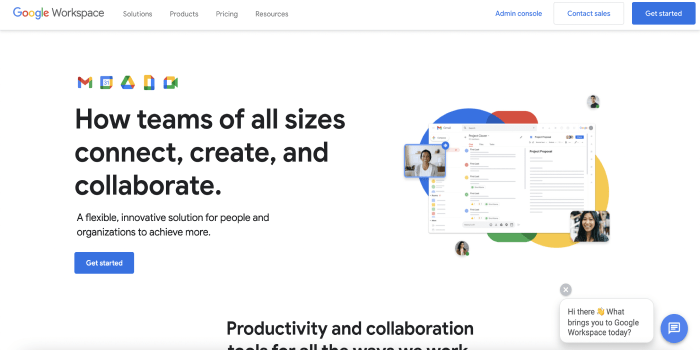
Team chat apps
A team chat app allows you to exchange text messages and online files in real-time. This way, conversations stay relevant and up-to-date. Needing only an Internet connection on your phone or computer, a team chat app is a simple and effective way to increase the rates of productive collaboration among team members.
🔶 Example:
Pumble — a free team chat app with unlimited users and message history.
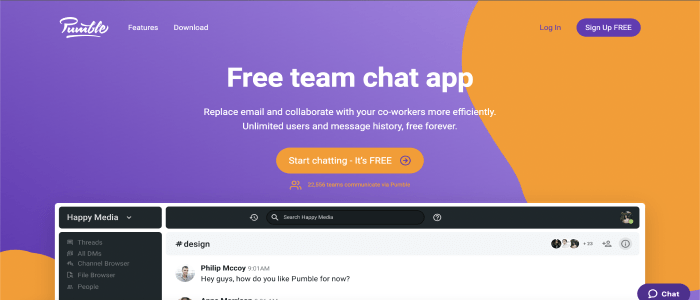
Utiliser Pumble pour améliorer la communication au sein de l'équipe
Process management software
Process management software allows users to plan, manage, and monitor the performance of various processes in the business environment. Additionally, this type of software is used to automate routine tasks, and to facilitate the flow of information across departments and employees.
🔶 Example:
Nintex — a process management and process automation tool.
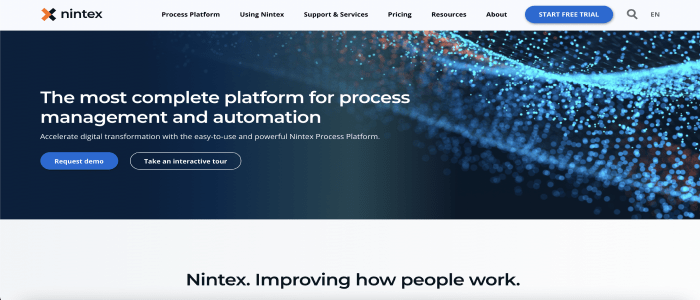
Outils de gestion de projet
Project management software has the ability to enable planning, organizing, and managing resource tools, as well as to develop resource estimates. This type of software provides effective ways to keep track of and deliver projects on time.
🔶 Example:
Trello — a web-based, Kanban-style, list-making application.

File sharing software
File sharing tools allow you to transfer files of various kinds, such as software, documents, videos, audio files, etc. You can distribute these files to all team members, use settings that limit access to select team members.
🔶 Example:
Google Drive — a file storage and synchronization service.
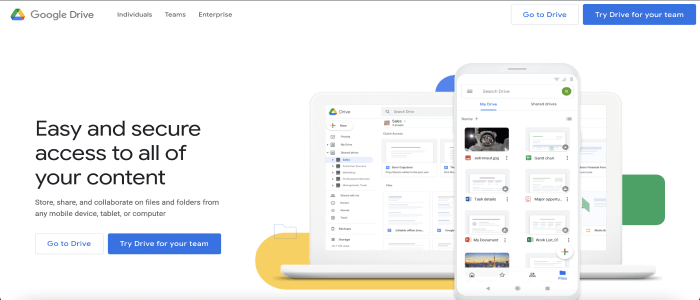
Knowledge management tools
Knowledge management tools are a range of software used to collect, store, and access information. These are systems that companies use to share information, both internally and externally.
🔶 Examples:
Document360 — a powerful, yet easy-to-use knowledge management tool.
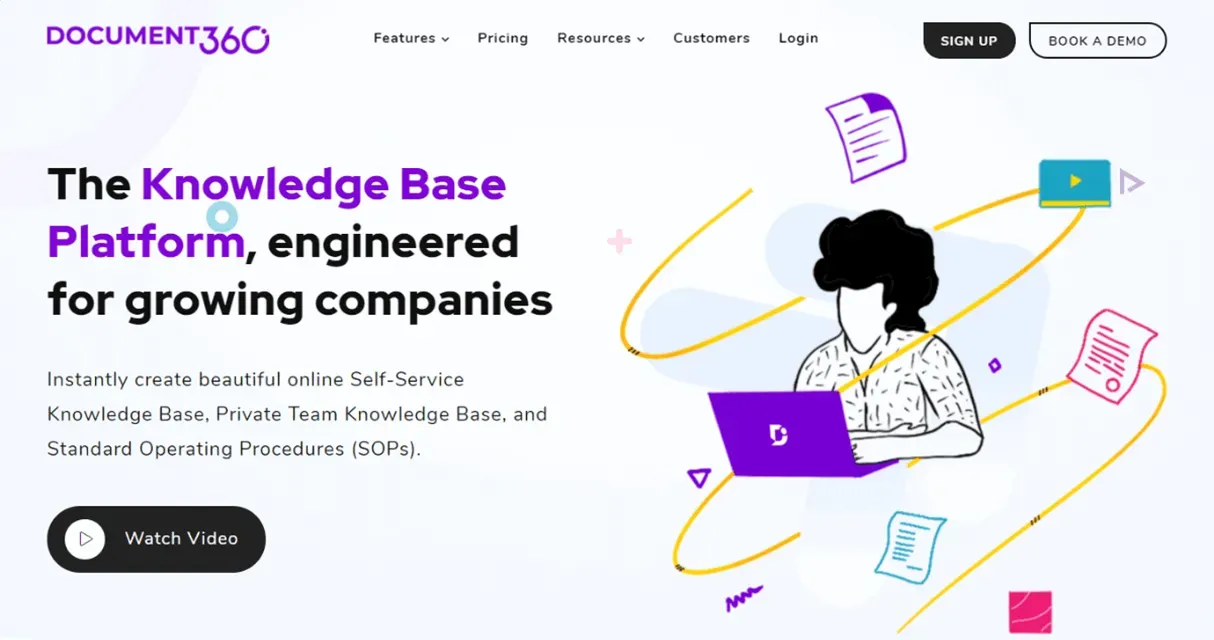
Confluence — a web-based corporate wiki.
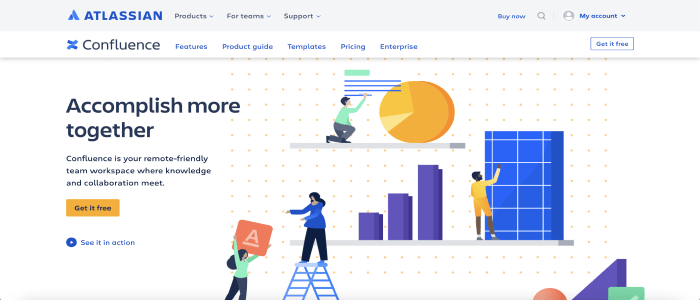
Calendar sharing tools
A shared calendar tool saves time by facilitating the organization of appointments and meetings without the need to consult all participants. The event organizer can check when the intended participants are available, and pick a time interval accordingly.
🔶 Example:
Google Calendar — a time managing and calendar-scheduling tool.
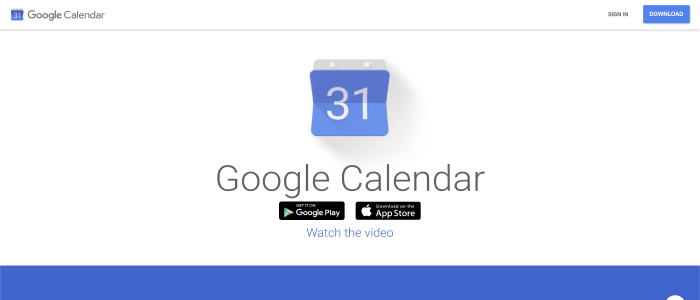
Digital whiteboards
An online whiteboard is an online analogue to the classic whiteboard. When using this tool, team members can communicate via text and visual information, including drawings and graphics.
🔶 Example:
Miro — a free online whiteboard tool.
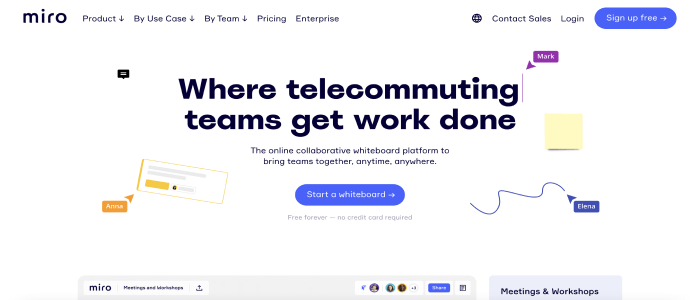
Video conferencing tools
These tools offer a way of communicating in real-time, using video and audio. Also, video conferencing tools allow a number of people from multiple locations to take part in the conference. This way, people get to have some of the benefits of in-person meetings, without having to share the same physical space.
🔶 Example:
Zoom — a video conferencing platform that supports meetings, chat, phone, webinars, and online events.

Avez-vous besoin d'un outil de conférence ? Utilisez Pumble
Which features of collaboration technology enhance collaboration?
In this segment, we will use the example of Pumble, a team chat app, to showcase features of collaboration technology designed specifically to enhance collaboration among team members.
Let’s take a look at a list of some of these capabilities of collaboration technology.
1. Public and private chat channels
For example, public channels in a team chat app can be used to communicate knowledge and share relevant updates with all company employees.
On the other hand, you can manually select and add people to private communication channels, if you want to have a confidential conversation with them.
🔶 Example:
The following screenshot shows a conversation taking place in a private channel of Pumble. This means that only members manually added by people with appropriate authorization can access it. So, what Catherine and Irene are talking about in this example can only be seen by other members of the “interns” channel.
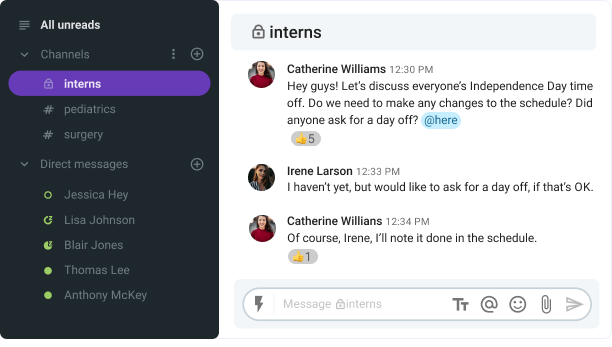
Explorer les canaux dans Pumble
🎓 Take a look at our list of Must-have channels for team chat apps. This link will take you to a blog post where you can find some useful and creative ideas for channels for your team chat app.
2. Team member mentions
This feature allows you to mention team members, so they know a message is directed at them. Team members get a notification of where and by whom they were mentioned. Most software allows you to mention one, a few, or all members in a particular channel.
🔶 Example:
In this next example, we see a conversation taking place between members of a channel called “campaign-planning”. Here, Stella first mentions Jessica and John, asking them if they agree on the proposed target audience and budget. These mentions send notifications to Jessica and John, and we can see that they respond to the question within minutes. Jessica mentions Xavier, further directing Stella to him for details on the specific numbers for target demographics.
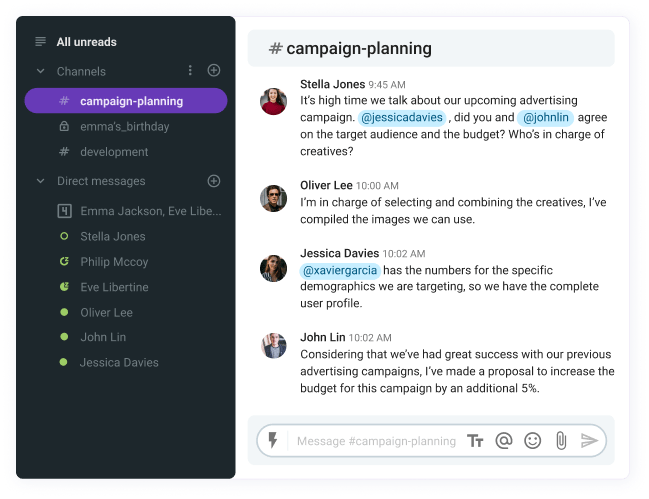
3. Status visibility and notification settings
Status visibility is another useful feature, allowing team members to let others know if they are available. Combined with smart notifications you can pause and mute, you can more easily create a productive workspace.
🎓 If you would like some tips on how to never miss important updates, take a look at our article on How not to miss important messages in group conversations.
🔶 Example:
The screenshot we provide next shows various options Jemma can choose when it comes to her status and notifications. She can even update her status with a little emoji, further explaining it in a playful, yet insightful manner. We see here that Jemma is currently active, but her notifications have been paused.
Also, we see an example of a notification Jemma receives when she is mentioned along with Marco and Phillip.
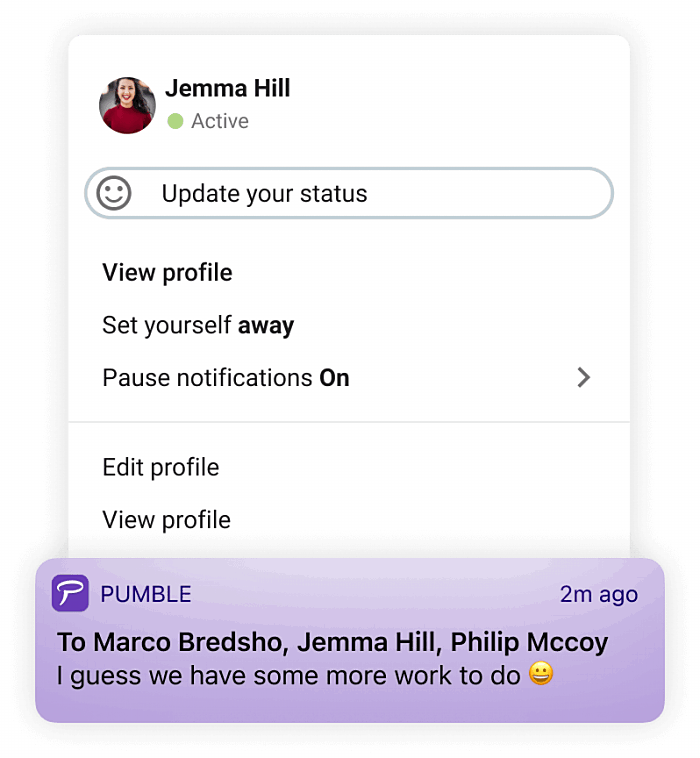
4. Chat history and search
If you can search your chat history, you have a simple way of returning to important conversations, and getting confirmation on previous decisions. Especially useful are the options of searching and sharing direct links to past messages, accessing old files. These options are enabled by unlimited chat history, which allows you to always have access to these important pieces of information.
🔶 Example:
Here we see that Jemma has typed in “video” in the search bar, which allows her to see all past conversations which include this keyword. The browsing options further facilitate finding exactly what she was looking for.
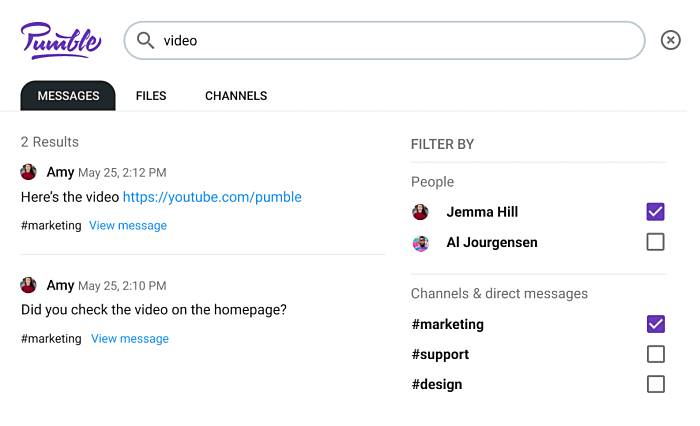
Pumble offre un historique des messages illimité
5. User groups with limited access
This feature allows users to moderate which team members have access to which information. For example, you can add guests to your workspaces, such as freelancers, vendors, clients, and contractors.
🔶 Example:
We see here that Jemma can moderate members and groups within Happy Media Pumble Workspace. When selecting Helen’s profile, we see that she can access “project-alpha” and “design-alpha” channels. Helen is a contractor, so she is not authorized to create channels or to view public channels, so she cannot access potentially confidential information. However, she has the ability to send messages and files, which allows her to collaborate with the employees of Happy Media.
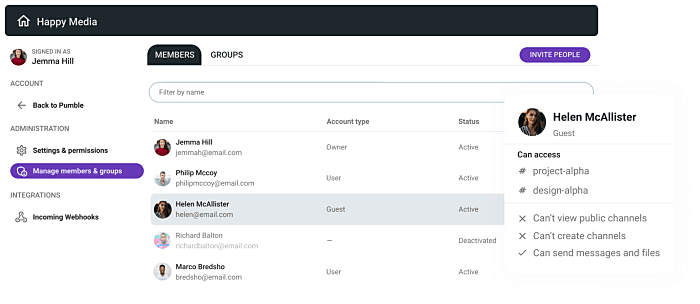
6. Customizable personal profiles
Putting faces to names and titles makes conversations more personable. The feature of collaboration technology that allows this is the ability to customize personal profiles. This feature allows the user to upload their picture, as well as add other relevant information.
🔶 Example:
In the following screenshot, we see that Jemma has uploaded her picture, along with her email address, her phone number, and her job description.
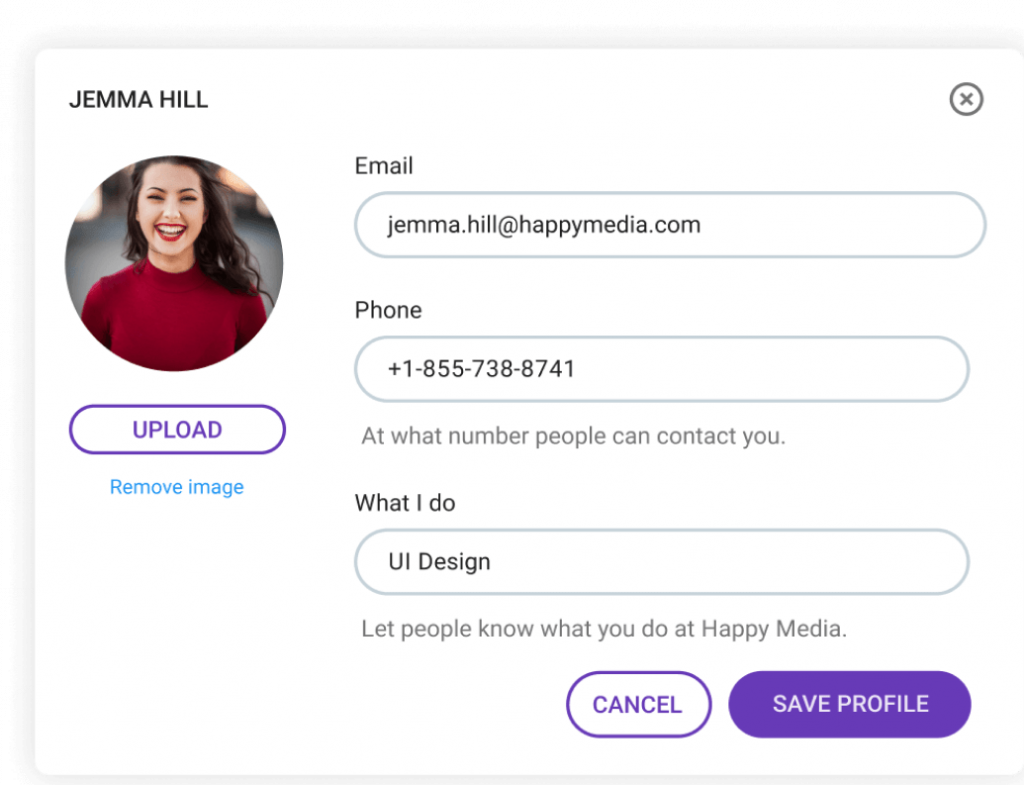
7. File sharing
The final entry on this list of important features of collaboration technology is file sharing. Quite obviously, this is the capability to share files, images, videos, and links with other team members — but also store them in your workspace, for future use.
🔶 Example:
The following screenshot shows a channel used by students attending a chemistry class. In it, we see that prof. Stuart has shared class materials, a video of the previous day’s lecture, along with a short explanation. So, the students can find all the different types of files necessary for this class in one place.
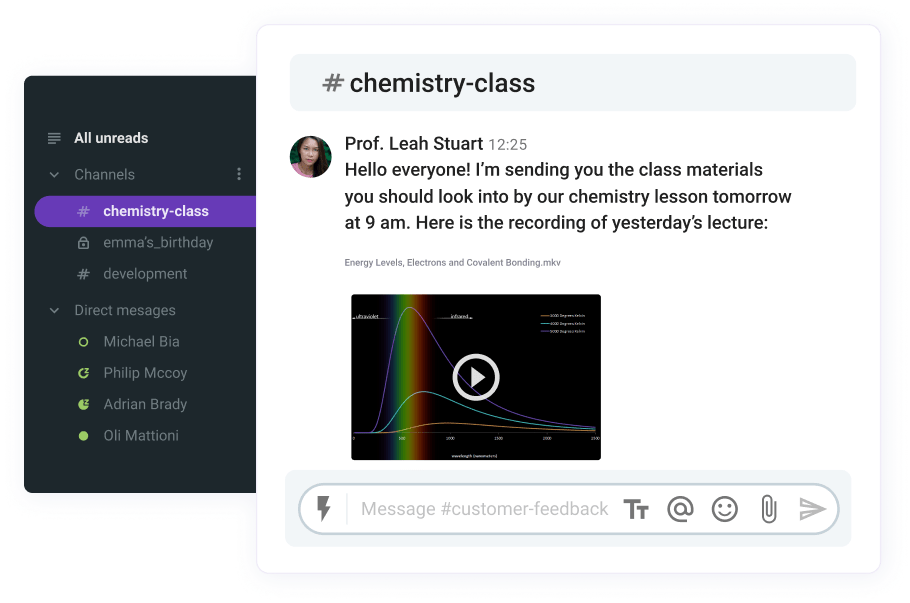
How to measure the effectiveness of collaboration technology tools using the five attributes of innovation
One approach to measuring the effectiveness of collaboration tools is to use a specialized survey. This survey evaluates collaboration technology based on innovation diffusion theory by E. Rogers (1995). In brief, the theory proposes five attributes of innovations that influence technology adoption, including relative advantage, compatibility, complexity, trialability, and observability.
1. Relative advantage
This factor deals with how participants perceive the quality of the group problem-solving process and outcomes. The questions to assess this include:
- “Was the group problem solving process efficient or inefficient?”
- “How satisfied or dissatisfied were you with the quality of your group’s results?”
2. Compatibility
This factor can be split into two components: compatibility among team members, and overall system quality.
Compatibility among team members
First, we have the questions based on how participants perceive the quality of interactions among team members. So, these questions might be:
- “Were you satisfied or dissatisfied with the group’s discussions?”
- “Were your interactions with your partner/team members free or constrained?”
Overall system quality
The other component of compatibility deals with the participant’s expectations of system quality. But be warned, the following questions do not relate to the actual system quality, only how it compares to people’s expectations:
- “How reliable was the system?”
- “Were the operations dependable or undependable?”
- “Was the response time of operations fast enough or too slow?”
- “Did the system behave in unexpected ways?”
3. Complexity
This attribute focuses on the perceived difficulty of understanding and using a collaborative tool. The questions to assess this include:
- “Was interacting with the system frustrating or not?”
- “Overall, did you find the system easy to use?”
4. Trialability
This factor is used to assess the level of ease of experimenting with the collaborative technology system. Here are the questions:
- “Do you think it is easy to recover from mistakes in this system?”
- “Did you find the exploration of features safe or risky?”
5. Observability
This attribute shows what kind of results people observe from using collaborative technology. The survey questions to assess this include:
- “Did you learn a new way of using the technology from your partner?”
- “Did you change your way of using the technology based on what you learned from your partner?”
- “Did you find new ways of doing science while working with your partner?”
These five attributes are used as a framework for creating the survey, which can then be administered to the employees. When the data is collected and analyzed, you should have a fairly accurate idea of how effective the implementation of collaboration technology was.
🎓 Measuring collaboration, in general, is a useful strategy. You can learn more about that from our detailed guide to Collaboration metrics: how to measure collaboration in a team.
Current trends in collaboration technology
With the global 2020 COVID-19 crisis, came a big switch to remote and hybrid work. Along with this transition, there was an increased necessity for collaboration tools to help enable work for people in different locations. In this segment, we will take a look at some of the more important current trends, expressed in statistics about collaboration technology use, attitudes towards it, and the market value of collaboration tools.
Current trends in collaboration technology use
We can first explore the broadest category, one of the general trends in collaboration technology use. Here are some:
- According to the 2021 Gartner Digital worker Experience Survey, since the start of the pandemic, there has been a 44% increase in the use of collaboration technology in the workplace. This adds up to nearly 80% of all workers using collaboration tools during 2021.
- As one Deloitte research shows that since the start of lockdown, 75% of office workers report using at least two new collaboration technologies for work.
- According to Absolute, there has been a 176% increase in collaboration app installation on company devices since the beginning of the 2020 pandemic. This study expects this number to have risen in the meantime.
Current trends in attitudes towards collaboration technologies
Moving on to attitudes executives and employees have expressed regarding the use of collaboration technology:
- One pulse survey by Harvard Business Review from 2020 dealt with making technology the integral part of employee experience strategy. The participants cited these as important prerequisites to collaboration:
- Communication tools — 74% of participants;
- Remote work tools — 74% of participants;
- Collaboration tools — 67% of participants;
- The previously cited Deloitte survey found that 39% of executives believe that the implementation of online collaboration tools is the most important factor in making remote work sustainable. This attitude has been made apparent by the COVID-19 crisis and is expected to continue in the future.
- Reviewing the McKinsey Global Institute Digital 2016 study, we find that 91% of workers belonging to Gen Z state that technical sophistication affects their interest in working in a company.
- Another study, one by Jabra from 2019, found that efficient collaboration tools helped retain the best talents by as much as 450%.
Current trends in market value of collaboration technologies
Finally, let’s explore some financial statistics, relating to the increase in market size and value for collaborative tools:
- According to a QY Research estimate, the global enterprise collaboration market will increase from $25220 million in 2019, to $36140 million by 2026.
- A forecast from Apps Run The World from 2020 predicts the increase of the global online collaboration market from $12.4 billion in 2019 to $13.5 billion in 2024.
- According to a 2021 Business Research Company prediction, the market of video conferencing will reach $8.67 billion in value by 2025.
With all these statistics in mind, we can say for sure that collaboration technology is here to stay, and that we can only expect further expansion and transformation down the road.
Emerging collaboration technologies: how will technology enable the collaboration process in the future?
Having taken a look at the trends towards the growth of the collaboration technology market, we can begin to see some of the implications this has for the future of collaboration technology. Naturally, the market growth is bound to incentivize the innovativeness and expansion of new features and technological solutions. Common predictions include a few of the significant ways the future of collaboration technology will change: the expansion of cloud-based collaboration solutions, the increased integration of AI, and the use of Augmented and Virtual reality.
☁️ The shift to cloud-based software
With the events of 2020, there has been a pronounced switch companies made to public cloud services. With the increase of remote work and the following digital transformation, cloud-based services are becoming mainstream.
According to one Gartner forecast, worldwide public cloud end-user spending will increase by 23% during 2021. This activity, however, is not only due to the COVID-19 crisis, but a particularly pronounced spike in a trend that could be observed over the last two decades. Along with the advancements made in collaborative technologies, we can expect the majority, if not all software to switch to public cloud services.
🤖 The integration of AI in business
The future has been here for some time when it comes to the use of AI in business. However, it has recently started gaining attention and becoming more visible. Some of the largest companies have already been using AI to increase their productivity and efficiency. For example, retailers use shopping history as insight into which products to recommend.
Further down the line, experts expect companies will increasingly use AI bots and Smart Virtual Personal Assistants (SVAPs) to help with automating project processes and improving workplace collaboration. More and more companies automate tasks using robotic process automation AI tools. Wearables tracking bodily functions and AI converting them into data also provide room for growth and mainstream success in the future.
To summarize, the global market value is expected to reach $190 billion and the field is quickly making huge advancements. so much so that the growth is impeded by a lack of trained and experienced staff. Looking at this, we can safely say that this is a type of technology that is bound to overtake a major share of business practices in general.
👓 The use of augmented and virtual reality
The final frontier of collaboration technology we can see from this point in time is the use of Augmented Reality (AR) and Virtual Reality (VR) to simulate intrapersonal collaboration.
While using Augmented Reality tools, we stay in touch with the physical world but have devices providing an informational overlay suited to the environment. So, with the help of AR in business settings, you can have instant access to relevant information and insights.
On the other hand, the Virtual Reality experience is fully immersive, provided by a head-mounted device. As such, it does not allow you to interact with physical objects, but with computer-generated virtual ones. This type of technology can be used to train people for certain situations, and perhaps in the long run establish completely virtual workplaces.
Some announcements of Facebook building a virtual reality-based “metaverse” make these predictions more realistic and imminent. Seemingly, we are inching closer to using virtual “copies” of reality to collaborate with other people.
Pumble is the ideal software to use to improve team collaboration
As organizations strive to enhance productivity, foster innovation, and streamline communication among team members, the choice of collaboration software becomes essential. Among the options available, Pumble emerges as the ideal solution for your team toward collaboration excellence.
Pumble is a team collaboration software with a user-friendly interface and extensive features.
Its real-time messaging facilitates instant communication while its dedicated channels allow focused discussions on specific projects or topics, minimizing distractions.
Pumble video conferencing, screen sharing, and meeting recording capabilities secure more productive collaboration by keeping everyone in sync and letting you get things done faster.
Moreover, Pumble transcends geographical boundaries ensuring that everyone stays connected and aligned towards common goals.
In conclusion, Pumble stands out as the quintessential collaboration software to catalyze your team’s success.
Embrace Pumble and unlock the full potential of your team’s collaboration — create an account today.
Comment nous examinons cet article : Nos rédacteurs et éditeurs vérifient les articles et les mettent à jour lorsque de nouvelles informations sont disponibles, afin qu'ils soient toujours d'actualité.